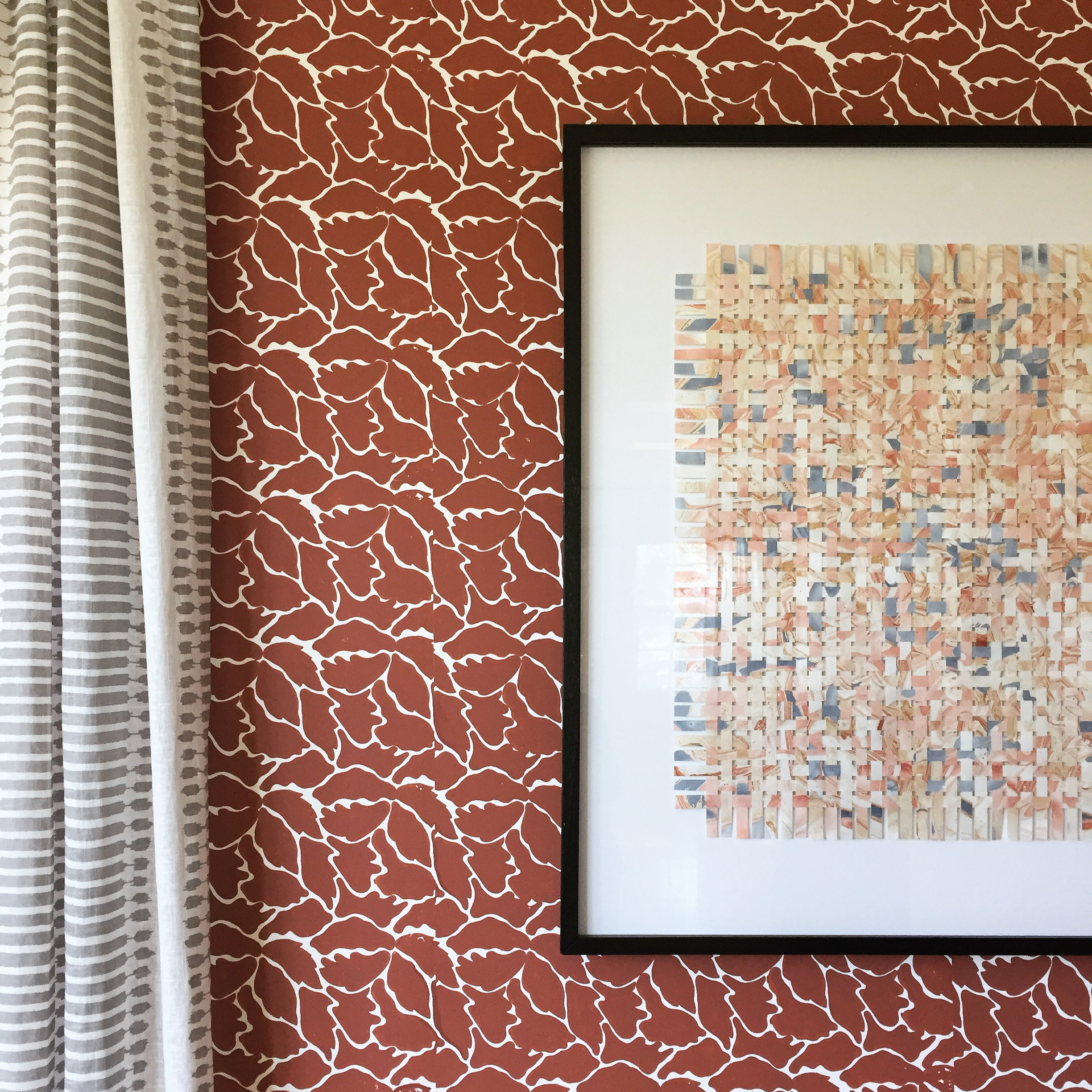 We’ve talked to WIA members from coast to coast and they’ve taken notice to Sarah Merenda of Merenda Wallpaper. With her urban influences and graphic design chops, she effortlessly takes her Queens home to the wall with rubbings across New York manholes in a simple black and white design; for example. From there, her work incorporates handwritten typography, painted strokes with chopsticks, and whimsical stars and polka dots; to share a few.
We’ve talked to WIA members from coast to coast and they’ve taken notice to Sarah Merenda of Merenda Wallpaper. With her urban influences and graphic design chops, she effortlessly takes her Queens home to the wall with rubbings across New York manholes in a simple black and white design; for example. From there, her work incorporates handwritten typography, painted strokes with chopsticks, and whimsical stars and polka dots; to share a few.
When last week we were gushing over the state of the wallcovering industry from a San Francisco office with wallcovering installer and member, Heidi Wright-Mead, and apprentice, Amy; all parties were inspired by the edgy designer to the east. It’s no secret that fabric and pattern are in, but with the creative nature of the craft, we're seeing the blend of artist, graphic designer, and wallcovering installer into one. The wallcovering installer is a special breed: part artist, part craftsman, part precision, and business acumen and now graphic artist; thanks in part to digital printing technology advancements.
We tracked Sarah down for a few minutes of her time in between “hand-painted murals, [and] digitally printed goods” to give us a little insight into her process, her business, and her design inspiration. Read on for her interview below.
We love to learn how paper hangers get into the trade. How did you begin your paper hanging career?
I started my wallpaper hanging career when I was 19 years old in 1996. My aunt and uncle owned a wallpaper hanging business in Atlanta, GA and when they offered me a job and a chance to relocate, I took them up on it. I assisted my uncle for about 6 months and then I started hanging. During that time period, I worked with 4 different uncles who hung wallpaper as well as another female installer.
What are the major types of wallcoverings you currently install?
I install traditional screen-printed wallpaper, clay coated, mylar, non-woven, silk, grasscloths, vinyl, hand-painted murals, digitally printed goods, gold leaf and wood veneer papers. Over the years, I’ve experienced a lot of different materials including covering a few galleries in tin foil, magazine paper, and newspapers.
What would you tell someone who is out there, struggling on their own, about what they can do to advance in their craft?
Join the WIA. Start working with other paper hangers and assist and watch them. Practice, Practice, Practice. Be patient, every day and every substrate is different. Experiment with different glues and materials. Don’t try to do everything yourself.
How do you think an association specifically for paperhangers could most benefit you?
By sharing knowledge of materials, tricks of the trade and to be social with others that may understand what we do!
What are your thoughts overall on the wallcovering industry?
I think it is booming, it’s exciting, and there is always more to learn. There are a lot of people interested in it, therefore people are putting effort into making new products and it’s becoming more competitive.
Has your work mix changed over the years? Did you go from being 85% residential, in the beginning, to become a higher mix of small commercial? Why did you make that plunge into new marketplaces? What most empowered you for that plunge?
I used to do a lot of residential and still do. Alos, I work at restaurants and office spaces and some hallways in residential buildings. I don’t do a lot of commercial jobs. I prefer being able to do more artistically pleasing jobs rather than big hotels, etc.
What remains the toughest part of your job?
Definitely balancing installation, with estimating, paperwork and design time.
What’s your favorite project you’ve ever worked on and why?
I’ve really enjoyed some of the Chelsea gallery projects I’ve worked on. I think I enjoy them because they are always a challenge and I never know what the artist is going to use, material-wise and I feel like I am helping the artist make their vision come to fruition. One of my favorite installs was with an artist named Daniel Buren from France at Petzel Gallery.
Where do you get your design inspiration?
I get my design inspiration from nature, the urban environment that surrounds me and especially from other artists I know and follow.




